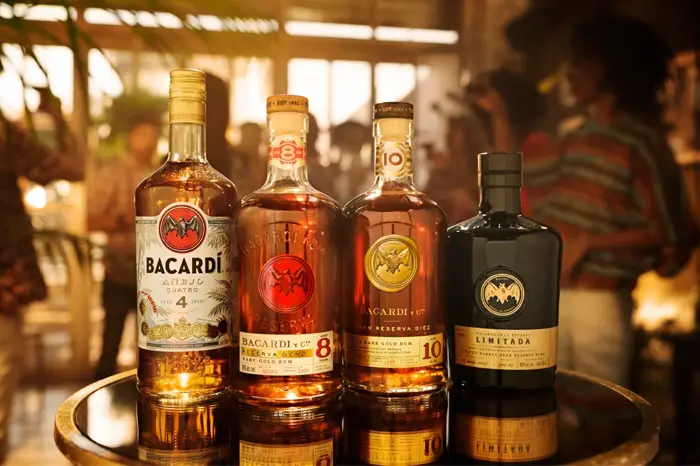
Originally founded by Don Facundo Bacardi Masso in Santiago de Cuba on February 4th, 1862, Bacardi is headquartered today in Hamilton, Bermuda. The Bacardi company also owns several other brands including Grey Goose vodka, Dewar’s scotch, Bombay Sapphire gin, Eristoff vodka, Martini & Rossi vermouth, Cazadores tequila, and the U.S. version of Havana Club.
Don Facundo Bacardí Massó, a wine merchant, emigrated from Catalonia to Cuba in the early 19th century. During this period, rum was cheaply made and not considered a refined drink, one rarely sold in upscale taverns. Don Facundo began attempting to “tame” rum. After experimenting with several techniques he hit upon filtering the rum through charcoal, which removed impurities. In addition to this, Facundo aged the rum in oak barrels, which had the effect of “mellowing” the drink. The final product was the first clear, or “white” rum in the world.
Moving from the experimental stage to a more commercial endeavor, he and his brother José set up shop in a small distillery on February 4, 1862. Their first copper and cast iron still produced 35 barrels of fermented molasses per day. In the rafters of this building lived fruit bats. Hence, the Bacardi bat logo.
The 1890s were turbulent times for the company. Emilio Bacardi, eldest son of Don Facundo, was exiled from Cuba for having fought in the rebel army against Spain in the Cuban Independence War. Emilio’s brothers, Facundo and José, and his brother-in-law Henri Schueg, remained in Cuba with the difficult task of sustaining the company during a period of war. The women in the family were refugees in Kingston, Jamaica. After the Cuban War of Independence, and the American occupation of Cuba, “The Original Cuba Libre” and the Daiquiri cocktail were both born with Bacardi rum. In 1899, US- General Leonard Wood appointed Emilio Bacardi Mayor of Santiago de Cuba.
In 1912, Emilio Bacardi traveled to Egypt where he purchased a mummy for the future Emilio Bacardi Moreau Municipal Museum in Santiago de Cuba (still on display). In Santiago, his brother Facundo M. Bacardi continued to manage the company along with Henri Schueg, who began the company’s international expansion by opening new bottling plants in Barcelona and New York City. The New York plant was soon shut down due to Prohibition, yet during this time Cuba became a hotspot for US tourists.
In the 1920s, Emilio opened a new distillery in Santiago. During this decade, the art deco Bacardi building was built in Havana and the third generation of the Bacardi family was entering the business. Facundo Bacardi was known to have invited US-Americans (still subject to Prohibition) to “Come to Cuba and bathe in Bacardi rum.” A new product was introduced: Hatuey beer.
The 1930s brought a new bottling plant in Mexico City and a new distillery in Puerto Rico under the leadership of Ron Bacardi. (Which is the name of the rum, not a person). Several trademark disputes went to court during this time regarding use of the Bacardi name on rum produced outside of Cuba. The company’s leadership then fell to Henri Schueg, who managed to keep the family name on the bottles coming from Puerto Rico. Another case was won by Bacardi which allowed that “ a Bacardi Cocktail is only a Bacardi Cocktail when made with Bacardi rum.”


